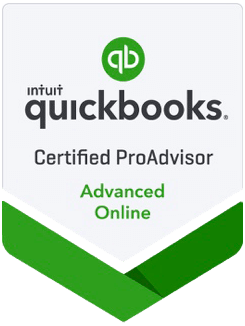Payroll Liability Reports Rule!
Hey there, QuickBooks aficionados! Alicia Katz Pollock here, the QBO Rockstar at Royalwise. Today I created some Payroll Liability Reports to let me know how much money I had to set aside for payroll taxes, and I wanted to share them with you.
If you’re like me and use QuickBooks Online Payroll, you know that state and federal taxes are automatically deducted from your account. The challenge? Making sure you have enough funds in your checking account when those deductions hit. Unfortunately, the standard payroll tax liability report in QuickBooks Online doesn’t give you a simple grand total of your upcoming tax obligations. Instead, it forces you to manually add up various figures to get the total amount you need to keep as a buffer in your account.
But fear not—I found a way to customize Payroll Liability Reports to do exactly what you need. Here’s how you can do it too.
Step 1: Start with a Balance Sheet
First, I began with a balance sheet report. This report gives me the grand total for my payroll liabilities, but it includes other items like IRA contributions and medical payments that I handle manually. My goal was to narrow it down to only the automatic state and federal tax payments.
Step 2: Drill Down into the Numbers
Next, I drilled into the details of one of the payroll liabilities, starting with federal taxes. QuickBooks shows a lot of unnecessary columns, so I headed up to the gear icon to customize the view. I turned off the options for names, numbers, and most of the other fields. The key columns I kept were the transaction type, date, expense type, and amount.
Step 3: Set the Date Range
Then, I changed the report period to show only this month’s data. This way, I could maintain a running tally of my current liabilities.
Step 4: Customize with Filters
Now, it was time to really refine the report. I hit the Customize button and adjusted the filters, then selected all automatic payroll liabilities, excluding any contributions and deductions that I pay manually, such as medical and retirement.
I also filtered out any tax payments already made during the month. This step is crucial because it ensures that the report only shows what’s still owed, not what’s been paid.
Step 5: Collapse and Simplify
To make the report as easy to read as possible, I collapsed the details so that only the subcategory totals were visible. With one click, I could see the grand total of my upcoming payroll liabilities—exactly what I needed to ensure I kept the right balance in my checking account.
Step 6: Save Your Customized Report
Finally, I saved the report under a new name, “Upcoming Payroll Taxes.” Now, it’s available anytime I need it. All I have to do is go to Custom Reports, select it, and voila!—I get a quick snapshot of my payroll tax obligations for the month.
Wrap-Up
If you found this tip useful, there’s plenty more where that came from! I create all kinds of QuickBooks Online training videos and classes, covering everything from basic reports to advanced payroll management. Whether you’re just getting started or looking to master more complex topics, I’ve got you covered.
Visit http://royl.ws/Reports to watch Running Reports, my full 2-hour course about creating and customizing reports, or visit https://learn.royalwise.com to explore my full range of courses. And don’t forget to subscribe to my YouTube channel at https://www.youtube.com/c/Royalwise?sub_confirmation=1 by clicking the bell icon so you never miss an update.
Again, I’m Alicia Katz Pollock, and I look forward to helping you become a QuickBooks pro. See you in class!






0 Comments